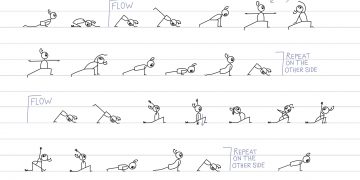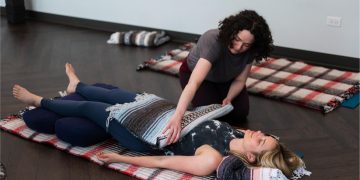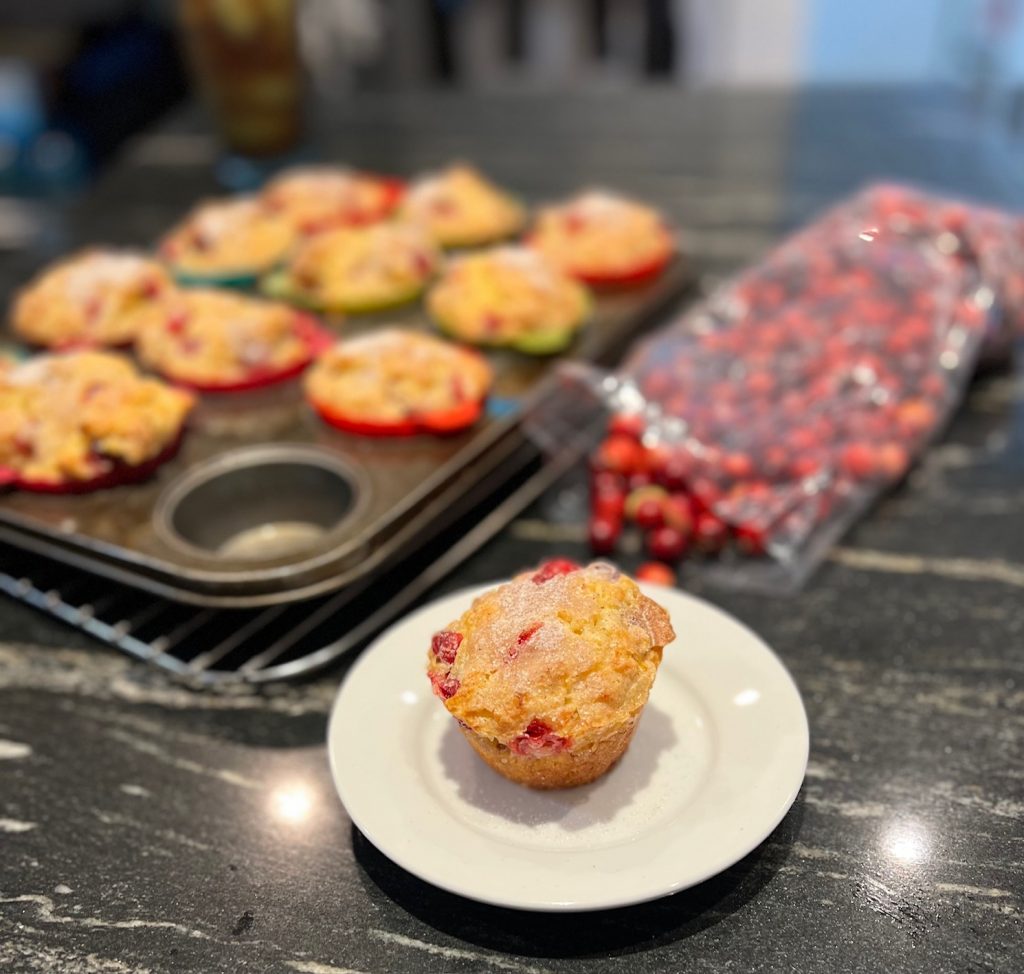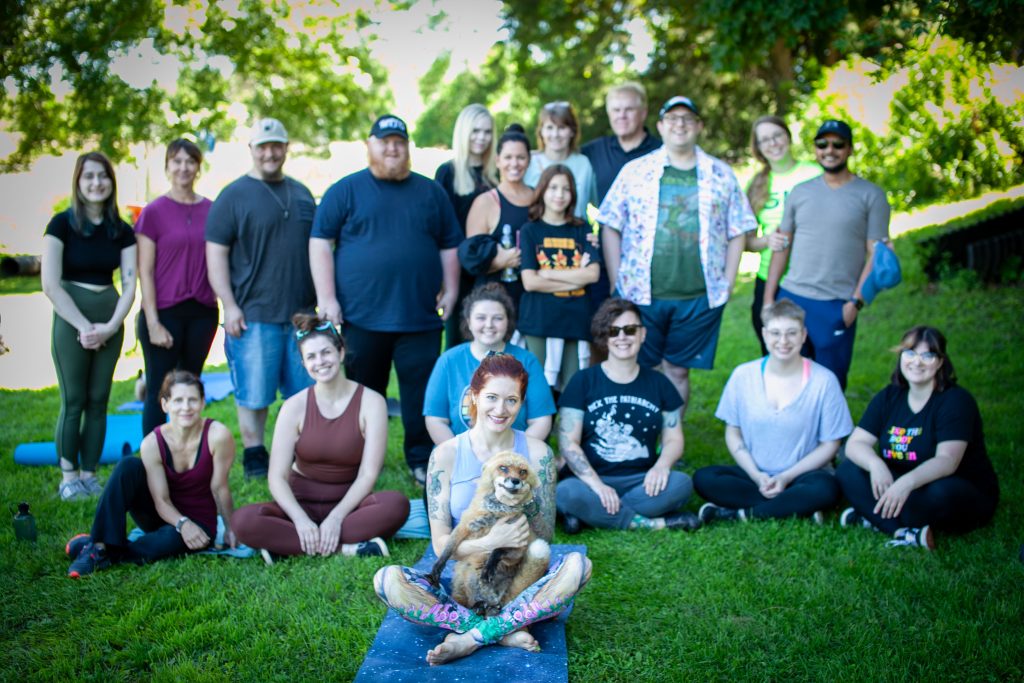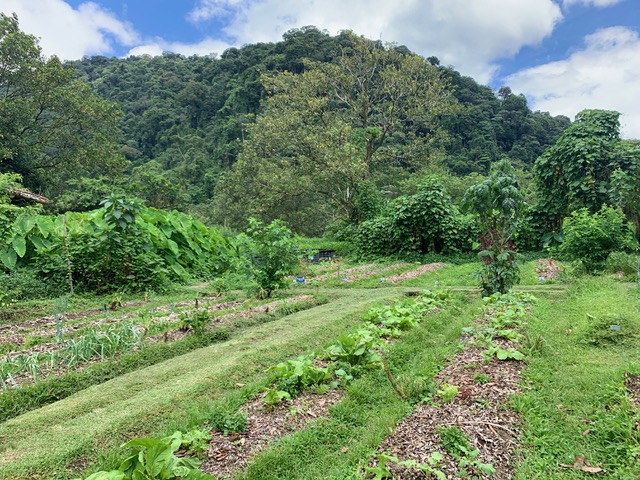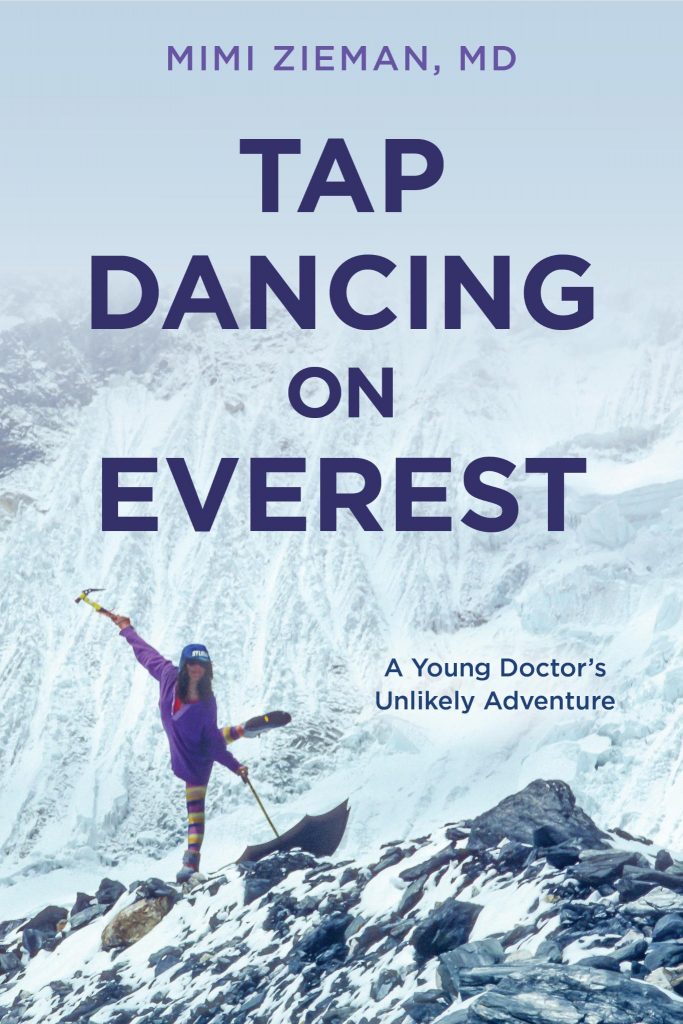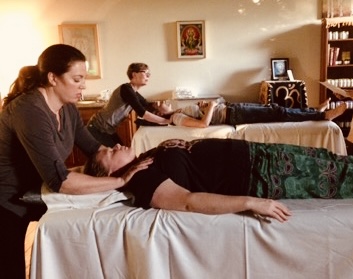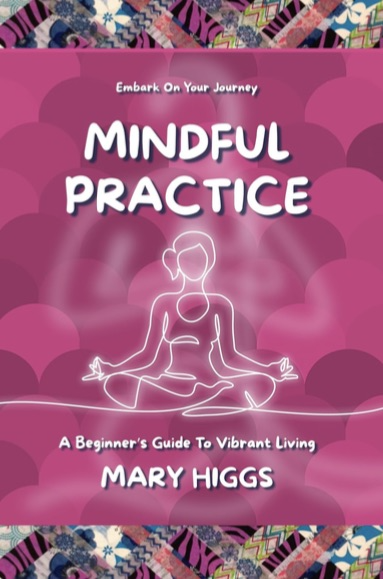
Have you heard the saying: “Neurons that fire together, wire together?”
OK, maybe I’m the only neuro geek in the room, but that is exactly what we do in a brain-boosting yoga practice. When neurons wire together, neuroplasticity happens … which is critical for our brains as we begin to age. Neuroplasticity is our brain’s ability to adapt and create new pathways, especially important for anyone in cognitive decline.
Did you know after the age of approximately 25, our brain begins declining … so when I say “as we begin to age,” I am referring to anyone in their late 20s on up. Everyone needs to be concerned about their brain health, no matter their age, because if your brain isn’t growing, it’s declining.
By forcing the left and right brain hemispheres to work together in brain-boosting yoga, while purposefully confusing the brain and challenging it to learn new information, we keep our brains functioning at their highest level — and neuroplasticity happens.
Yoga, in general, will help you feel more at ease and build endurance. When we focus specifically on brain-boosting yoga, we create changes in our brains, bodies, and lives.
Strategically using contralateral, cross lateral, midline, and gaze stability exercises in conjunction with “resetting” poses (such as gentle forward folds) and breathwork, we give our brains important neurological information:
- proprioception (where we are in space)
- visual-spatial awareness
- vestibular input
- parasympathetic activation (“rest and digest” mode)
- improved vagal tone
- nervous system resilience
Every BODY really can do yoga, regardless of size, flexibility, ability, and injury. I use a slow, gentle, and intentional brain-boosting yoga style. If you have balance or mobility issues, you can get the same benefits by doing the practice seated in a chair. The key is consistency … you can’t just try it once and say whether it worked or not. You need to practice consistently to give your brain a chance to develop neuroplasticity and create lasting changes.
Benefits of brain-boosting yoga include:
- Improved flexibility
- Increased strength
- Better balance
- More restful sleep
- Improved relationships (think: less conflict because you are less stressed)
- Enhanced mobility
- Calmer sympathetic nervous system (getting you out of “fight or flight”mode)
- Creating neuroplasticity (critical for our brains as we age)
- Improved gut function
Pictured are a few poses you can try at home:
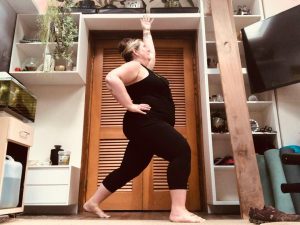
- Begin in a wide stance with your right foot forward and left foot back. Square your hips to the front foot and place your right hand on your hip. With slow and controlled movements, inhale as you lift your left arm overhead while bending the right knee. As you exhale, straighten the leg and lower the arm. Do 5-7 cycles on the right side, and then turn to the side of your mat with your hands on your hips and do 1-2 slow forward folds. Turn to the left and repeat on the left side.

- Begin in mountain pose, and then cross the right leg over the left with the right foot on the floor next to the left foot. Cross your arms across your chest, hugging your shoulders. Breathe here for 1-3 minutes … you may close your eyes or gently lower your gaze to the floor. Uncross your legs and arms. Shake your body for 1 minute before repeating by crossing the opposite leg and arms.
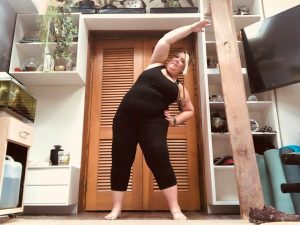
- Begin with your feet slightly wider than hip-width, hands on your hips. As you inhale, raise your right arm overhead and continue into a lateral bend to the left. Exhale as you release your arm back down to the side. Repeat 5-7 times on this side, taking a minute to shake your body before repeating on the other side.
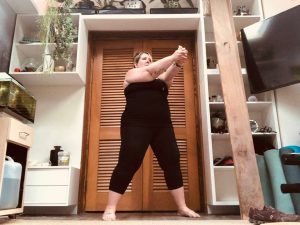
- Begin with your feet slightly wider than hip-width. Bring your arms straight out in front of you, grasping your hands with the thumbs pointing up. Focus your gaze on your thumbs as you slowly rotate your body to the right, back to center, and then to the left. Repeat 5-7 times.
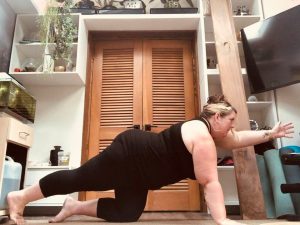
- Begin in table top pose on all fours. With slow and controlled movements, inhale as you extend your left arm in front and your left leg to the back (you may rest your foot on the floor if you’re unable to hold it up without shifting your hips). As you exhale, bring your arm and leg back to neutral. Repeat with the right arm and left leg. Do this 5-7 times with each side.
Amy Zellmer is Editor-in chief of Midwest Yoga + Life Magazine and The Brain Health Magazine. Amy has a passion to spread the message that yoga is for every BODY, regardless of size or ability, and a mission to raise awareness about the devastating consequences of TBI. She has her 500RYT, and is certified in trauma-informed yoga, LoveYourBrain yoga, and Yoga For All. She is also a Reiki Master. In her free time, Amy enjoys road-tripping across the country visiting National Parks.




